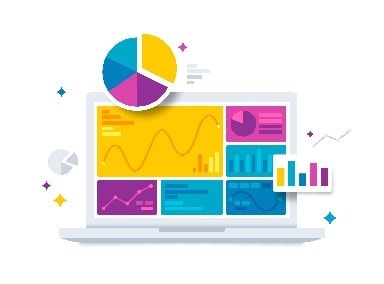Total Worker Health in Action: September 2022
Volume 11, Number 3, September 2022
Director’s Buzz
L. CASEY CHOSEWOOD, MD, MPH
As we continue preparing for the 3rd International Symposium to Advance Total Worker Health®, work never ceases in the field. We are excited to feature some fascinating stories in this quarter’s edition of Total Worker Health (TWH) in Action!
Our TWH Exclusive features an interview discussing the implications of increased overtime and long work hours. As our readers know, NIOSH encourages TWH approaches that value a work-life fit that improves worker well-being. Read below about how policies and practices around long work hours can impact workers’ mental and physical well-being.
Readers will also gain insight into the practical, on-the-ground TWH work in this quarter’s Promising Practice. See below to find out how a position exclusively dedicated to TWH practice is helping an organization make changes to improve well-being while listening to workers.
Further down, you will also find updates from NIOSH and our valued partners. This quarter’s featured TWH Affiliates are the Kentucky Injury Prevention and Research Center and the National Association of Worksite Health Centers. Get to know them through the Q&A!
Finally, don’t miss your chance to register for the symposium by September 30. Sign up for the virtual symposium experience to attend from anywhere! Check out the program and register.
We love hearing from you! For the latest TWH news, research, and events, follow us on Twitter at @NIOSH_TWH, join our NIOSH TWH LinkedIn Group, or send us an email at twh@cdc.gov.
Total Worker Health Exclusive
A Growing Crisis: Mandatory Overtime and Long Work Hours
Editor’s Note: This article features an interview with Marnie Dobson, PhD, Director of the Healthy Work Campaign, and Marcy Goldstein-Gelb, MS, Co-Executive Director of the National Council for Occupational Safety and Health.

Source: Getty Images
The opinions expressed in this article are the author’s own and do not necessarily reflect the view of the Centers for Disease Control and Prevention, National Institute for Occupational Safety and Health.
In workplace settings, fatigue is commonly associated with nonstandard schedules, like night shift work and extended work hours, which can often disrupt or shorten sleep. High levels of fatigue can affect any worker in any occupation or industry with serious consequences for worker safety and health. The TWH approach emphasizes the fundamental role that high-quality work and healthy work design play in safer, healthier workers. This article features a discussion about the impact of overtime and long work hours with Marnie Dobson, PhD, Director of the Healthy Work Campaign, and Marcy Goldstein-Gelb, MS, Co-Executive Director of the National Council for Occupational Safety and Health.
L. Casey Chosewood, MD, MPH, Executive Editor
Emily Kirby, Managing Editor
Sarah Mitchell, Associate Editor
Cheryl Hamilton, Copy Editor
Steven Marra, NIOSH Web Developer
Please send your comments and suggestions to us at twh@cdc.gov.
To receive the NIOSH TWH email newsletter, enter your email address:
Participatory approaches are a key tenet of the TWH model for designing safer and healthier jobs. The NIOSH TWH Program has tools to help organizations identify initial steps to improve workforce safety, health, and well-being. Learn more about these topics from the NIOSH Center for Work and Fatigue Research and the NIOSH Healthy Work Design and Well-being Program.
Promising Practice
Planting the Seeds of a New Comprehensive TWH Program
Editor’s Note: This article features the work of Dr. Christian B. Rathke, DMSc, PA-C, DFAAPA; Director of Total Worker Health in National Environmental Satellite, Data, and Information Service; Captain, United States Public Health Service.

Source: United Launch Alliance.
Retrieved from National Environmental Satellite Data and Information Service.
We hear that your position is dedicated to the TWH approach. Can you tell us more about your role?
The first of May 2022, the National Environmental Satellite, Data, and Information Service (NESDIS) within the National Oceanic and Atmospheric Administration (NOAA) hired me as the first Director of TWH in the agency. The goal was nothing short of reimagining healthy work and transforming the way work is completed if there is a better way. A healthy workforce is critical in accomplishing our mission and minimizing impacts on U.S. life and property. NESDIS provides secure and timely access to global environmental data and information from satellites and other sources to promote and protect the nation’s security, environment, economy, and quality of life. Our workforce is a multidisciplined and geographically dispersed team comprised of federal employees and a large affiliate workforce.
How does your work incorporate TWH approaches?
The vision of the TWH program is to protect the physical and mental health of the workforce and advance their well-being by creating healthier work. The vision is intentionally broad due to both work-related factors and circumstances beyond the workplace that influence well-being and sustained high performance. To empower outcome driven transformation through top down cultural and policy changes, when workforce data analysis suggests a specific change, I report to and am part of an incredibly supportive executive leadership team. By using my 21 years of experience as a physician assistant, as well as my medical science doctorate and aerospace physiologist training, I have begun analyzing the overall state of healthy work in our population by investigating the influence of physiological and mental human factors in operational environments.
How did you get started with this work? Is there anything you can share with us about what you’re working on now?
By incorporating the 15+ years of research by the CDC/NIOSH Centers of Excellence, I am able to create reasonable starting target points for analysis as well as incorporate agency wide surveys, time off and sick leave pay records, and anecdotal input from all-hands presentations and targeted leadership discussions. All the data and analysis will be packaged in an executive paper published sometime this fall. The paper will also include practical system-oriented, organizational-level solutions that will be scalable for broader applications as demands and expectations increase across the workforce.
What have you learned from this research so far?
What is clear from national research is that both the federal and private sectors are facing big challenges such as burnout, exhaustion, hybrid work environments, infectious diseases, and the rapidly changing expectations the workforce has of employers and managers. To help relieve some of the immediate pressure on our workforce, I also give organizational and individual employee level physical and mental health consultations. These provide initial case management, advocacy, and perspective to leadership teams struggling to address present day challenges while managing complex and technical workflow patterns. We are all grappling with societal challenges that are changing the way we work and communicate as individuals and as organizations. Because of the number and size of these challenges, the need for us to work toward solutions together has never been greater. We look forward to continued collaboration with other CDC/NIOSH TWH Affiliates. Learn more about NOAA.
Spotlight on Opioids in the Workplace
Editor’s note: If you or someone you know needs assistance (in English or Spanish) with mental health concerns or substance use disorders, prevention, and recovery, please contact SAMHSA’s National Helpline at 1-800-662-HELP (4357) or the Lifeline at 988. You can also visit SAMHSA’s Find Help webpage and the Lifeline webpage.

Source: Getty Images
NIOSH-funded grantees and other partners are working to address the opioid crisis. They conducted research and developed resources, including educational materials, trainings, and surveillance data, related to the prevention of opioid misuse and overdose in working populations.
New research and resources intended to help workers, employers, and medical providers are now featured on the Opioids in the Workplace: NIOSH Extramural Research webpage. Examples include research on substance use and misuse, opioid overdose, and suicide prevention for various occupations like construction workers, truck drivers, and veterinarians, as well as for veterans.
News from NIOSH
Attend the 3rd International Symposium to Advance TWH From Anywhere
Skip the travel and register to virtually attend the 3rd International Symposium to Advance TWH! Registration for in person and virtual attendance is open until September 30. Virtual content will be available on demand for replay viewing after the live window indicated on the agenda. In-person attendees will have access to content from both agendas. Continuing education credits are available. An overview and full agenda are now available.
New Book Highlights Healthy Workplaces
“Making Healthy Places, Second Edition: Designing and Building for Well-Being, Equity, and Sustainability” provides inspiration, tools, and best practices for people interested in the work of promoting well-being. Published in July 2022, the book includes a chapter by NIOSH authors Jonathan A. Bach, Paul A. Schulte, and L. Casey Chosewood, Director of the Office for TWH. Chapter 13, “Healthy Workplaces,” discusses how workplace design and policies can protect workers and support and promote worker safety, health, and well-being. In the chapter, the authors provide an overview of occupational health and safety concepts, including the history of NIOSH and different types of workplace hazards and control strategies. They describe workplace interventions that can increase worker health on and off the job and promote sustainability, taking a closer look at design features within and around workplace buildings that can sustain and improve health. The chapter addresses important topics like psychosocial workplace health, workplace violence, prevention through design, and work equity, discussing specific worker populations, like migrant and undocumented workers and workers with disabilities.
Recording Available: Climatologic Conditions, Chronic Disease, and Work
A recording of the webinar “Climatologic Conditions, Chronic Disease, and Work: Emerging Evidence and Its Implications” is now available on YouTube. This NIOSH webinar originally given in June 2022 explores the impact and implications of climatologic conditions on chronic health conditions among workers within the context of occupational health and safety.
News From the NIOSH Centers of Excellence for TWH
- The California Labor Laboratory posted recorded sessions from their first annual conference. Watch the sessions on demand to learn more about important topics like shift work, burnout, and worker well-being. The Center will host a fall webinar series on the fourth Wednesday of each month from 12–1 p.m. (PT). Join the first event in the series on September 28, “Past as Prologue: How the History of Occupational Illness and Injury Teaches Us About Where We Are Today.”
- The Carolina Center for Healthy Work Design and Worker Well-being is working on a research project entitled “TWH Approach to Reduce Falls and Advance Fall Protection in Firefighters.” They recently released a new webpage for the project featuring a recruiting video. The Center also hosted a visiting scholar on Workplace Health, Professor Maureen Dollard.
- The Center for Health, Work & Environment (CHWE) is celebrating 10 years of their TWH program, Health Links™, which has reached over 750 organizations.Health Links started as a group of local consultants training business leaders across Colorado and is now a nationally trusted advisor for a growing network of organizations committed to TWH practice. CHWE launched a Recovery Friendly Workplace initiative and is recruiting business leaders to participate in the Recovery Friendly Peer Learning Series. With input from occupational safety health organizations, labor, and NIOSH, CHWE members are spearheading the launch of the new Society for Total Worker Health. The society will serve as a transdisciplinary community of researchers, educators, professionals, practitioners, students, and others who share a common interest in advancing worker health, safety, and well-being.
- The Center for the Promotion of Health in the New England Workplace (CPH-NEW) expanded its flagship Healthy Workplace Participatory Program (HWPP) Toolkit to offer more ways for employers and professionals to use the materials. Does your organization use Lean? Lean is a holistic continuous improvement approach for maximizing value for customers and eliminating waste. If so, you might be interested in visiting the new HWPP Tools for Lean webpage. Continue visiting the HWPP Toolkit webpage as new tools are planned in future to help employers build readiness for implementing a TWH program.
- The Center for Work, Health, & Well-being will welcome visiting researchers in September:
- Emma Cedstrand is a licensed psychologist and PhD student at the Institute of Environmental Medicine at the Karolinska Institute in Sweden
- Ann Sophie Lauterbach, MSc, is a second year PhD student at the Graduate School for Behavioral and Social Sciences, Future of Work Lab, at the University of Konstanz in Germany
- Connect with Center researchers virtually or in person at the 3rd International Symposium to Advance TWH. Listen as Center researchers present on work organization, mental health of construction workers, accelerating research to practice, and more.
- The Healthier Workforce Center of the Midwest (HWC) released the following new communication materials:
- A new video summarizing the Center’s research projects and outreach and education programs.
- A new podcast titled “Successful Safety Culture at Parker Hannifin” highlights the promising practices of the Nebraska-based organization, recently recognized with the Peak Level Nebraska Safety Council Award for their accomplishments.
- A report Starting a Prevention Program for Opioid Abuse in Construction, now available on their website, to help organizations develop a workplace program addressing opioid and substance abuse.
- The Johns Hopkins Psychosocial, Organizational, and Environmental Total Worker Health® Center in Mental Health (POE Center) will host the Mental Health in the Workplace Fall Summit October 6–7 in collaboration with the Johns Hopkins Education and Research Center. In early August, the advisory committee for the Carolyn C. Mattingly Award for Mental Health in the Workplace met and identified winners to be announced in an award ceremony this November in Bethesda, Maryland. The award is given to organizations exhibiting a robust approach that supports employee mental health and well-being.
- The Oregon Healthy Workforce Center’s (OHWC) welcomes a new Outreach Director, Erin Flynn. Erin will lead the Oregon Institute of Occupational Health Sciences outreach team’s continuing and evolving efforts toward increasing the public health impact of our worker safety, health, and well-being research. OHWC’s latest podcast episode, “Brain Cleansing Technology: Better Sleep For A Better Tomorrow?,” discusses a new study funded by the U.S. Department of Defense to test a headband designed to enhance sleep. In case you missed it, you can now access recordings from the OHWC Occupational Health Psychology Summer Institute.
- The University of Illinois at Chicago (UIC) Center for Healthy Work’sGreater Lawndale Healthy Work (GLHW) project is piloting the Greater Lawndale Loteria with stakeholders such as youth, community leaders, and workers. Great Lawndale Loteria is an evidence-informed, historically grounded, and worker justice themed educational game. UIC also plans to pilot the game with small business owners and policy advocates. Other GLHW Project efforts include identifying individuals to join the council—a group of community-academic stakeholders who identify, develop, implement, and build on community interventions that promote healthy work in Greater Lawndale.
- The Utah Center for Promotion of Work Equity Research (U-POWER) is sharing TWH-relevant issues and research through a social media campaign called “Elements of TWH.” Check out the campaign’s progress on Twitter, Facebook, Instagram, or LinkedIn. This campaign is in anticipation of a TWH certificate to be released in March 2023. The certificate is designed to introduce community members to work as social determinants of health, to teach about the fundamentals of TWH, and to explore strategies for change in work health and equity. U-POWER is also developing a primer course on community-based participatory research in collaboration with Research Education at the University of Utah.
These are just a few of the updates from the NIOSH Centers of Excellence for TWH. To learn more about each of the Centers and their response efforts, visit their websites.
News From NIOSH TWH Affiliates and Partners
Featured Affiliates: Get to Know the NIOSH TWH Affiliates
This feature was created to introduce our readers to current NIOSH TWH Affiliates. See how the NIOSH TWH Affiliates responded when we asked about their work.
Partner Updates
Chronic Disease Self-Management Programs: Research From the University of Georgia
The Workplace Health Group in the College of Public Health in the University of Georgia published research on translating the Chronic Disease Self-Management Program (CDSMP) to worksites. The paper won an award from the American Journal of Health Promotion. Watch the recording and learn more about the research from an April presentation.
New Reports From the National Safety Council
The National Safety Council (NSC) recently released two new reports:
- The Mobility, Technology, and Safety: The Next 20 Years Executive Summary report was commissioned to understand the potential evolution of transportation technologies over the next 20 years and their implications for traffic safety in urban areas.
- The Impairment Detection Technology & Workplace Safety report reviews impairment detection technologies, which have the potential to detect impairment from multiple causes.
Stay tuned to the NSC website for another new paper on preventing work-related musculoskeletal disorders.
New Publications and Resources
From CDC and NIOSH
- Climatologic Conditions, Chronic Disease and Work: Emerging Evidence and Implications
- Dissemination & Implementation Science Aids TWH Intervention
- New Research Framework Accounts for Social Influences on Work and Health
- Precarious Work, Job Stress, and Health-related Quality of Life
From Our Partners
- How the Senior Community Service Employment Program Influences Participant Well-being: A Participatory Research Approach With Program Recommendations
- Inhaled Silica Nanoparticles Cause Chronic Kidney Disease in Rats
- The Missing Link: The Role of the Workplace in Mental Health
- Seat Technology to Improve the Safety and Health of Commercial Drivers
- System-level Efforts to Address Pain-related Workplace Challenges
- The Potential for TWH Approaches in State and Territorial Health Departments: A National Mixed-methods Study
- Working Conditions, Worker Health and Wellbeing & Turnover in Residential Addiction Treatment Organizations in Massachusetts
Conferences, Webinars, and Training
September
7 – CHWE will host the webinar “Exploring Ethics and Intentional Hybrid Work” at 12 p.m. (MT). The webinar will focus on the ethical challenges surrounding hybrid work. A panel of experts will discuss the effectiveness of the remote environment along with the advantages, disadvantages, and inequities that exist as workers manage the world of hybrid work.
8–9 – The National Association of Worksite Health Centers 9th Annual Forum will be held in Nashville, Tennessee. The event will have formal and roundtable sessions. Sessions will focus on worksite health center topics like planning and design, operations, staffing and management, and legal and regulatory aspects.
9 – U-POWER researcher Dr. Rachael Jones will present on “The Role of Power in TWH” at the 2022 Professional Development Symposium hosted by the San Diego American Industrial Hygiene Association.
13 – The NSC will host “Countersteer: There Are No Accidents” at 2 p.m. (ET). The series will explore important topics to address roadway safety; this event will feature the book “There Are No Accidents: The Deadly Rise of Injury and Disaster—Who Profits and Who Pays the Price” by Jessie Singer. Register today and find past events.
20 – OHWC’s Leslie Hammer will present “Will New and Emerging Guidance Improve Employer Efforts to Advance Workforce Mental Health?” at the Fall Think Tank during the 2022 HERO Forum.
28 – The California Labor Laboratory will host “Past as Prologue: How the History of Occupational Illness and Injury Teaches Us About Where We Are Today” at 12 p.m. (PT).
30 – Last day to register for the 3rd International Symposium to Advance TWH!
31 – Join CHWE for the webinar “A TWH Approach to the Built Environment and Getting Outdoors at Work” at 11 a.m. (MT). The TWH approach focuses on how the workplace can mitigate threats to worker health and safety and enhance overall health and well-being. The built environment in which we work- at home and at the workplace contributes significantly to our overall sense of well-being. Getting outdoors at work supports individual health and safety.
October
6–7 – Join the POE Center and Johns Hopkins Education and Research Center for the Mental Health in the Workplace Fall Summit. This in-person and virtual regional event will focus on workplace culture, peer support, mental health communication, and burnout, among other topics.
11–14 – The 3rd International Symposium to Advance TWH will be hosted virtually and in-person at the National Institutes of Health Natcher Conference Center in Bethesda, Maryland.
20 – Save the date for a NIOSH webinar “Promoting a Sustainable Work-nonwork Interface,” hosted in honor of National Work and Family Month. The webinar is at 3 p.m. (ET) and free continuing education is available. Stay tuned to the TWH webinar webpage for more information.
27 – CPH-NEW will host the TWH Trends: Expert Webinar Series at 1 p.m. (ET), titled “Implementation Science Approaches for Occupational Safety and Health Research: Implications for Advancing TWH.” NIOSH’s Dr. Rebecca Guerin will share her work and provide examples and insights about opportunities for leveraging implementation science methods, models, strategies, and measures in complex and dynamic workplace settings to increase worker safety, health, and well-being.
November
10 – Save the date for the next event in the TWH webinar series at 3 p.m. (ET). Stay tuned to the TWH webinar webpage for more information.
Find more events on the NIOSH Conferences, Meetings, Webinars, and Events webpage.
Total Worker Health® is a registered trademark of the U.S. Department of Health and Human Services (HHS). Mention of any company or product does not constitute endorsement by the National Institute for Occupational Safety and Health, Centers for Disease Control and Prevention. In addition, citations to websites external to NIOSH do not constitute NIOSH endorsement of the sponsoring organizations or their programs or products. Furthermore, NIOSH is not responsible for the content of these websites. All web addresses referenced in this document were accessible as of the publication date.


